
The artwork "Humans on the Moon" by Alexei Leonov, science fiction artist and Soviet cosmonaut.
Pavel Balabanov / RIA NovostiIn the early days of the Soviet Union, science fiction films were not very popular. The primary subject matter at that time was
In the 1980s, works by science fiction writers such as Alexander Belyaev, the Strugatsky
Soviet people dreamt of space travel long before it became a reality. One of the first films in the country about the future, the silent film, Cosmic Voyage (1935), predicted a flight to the Moon in the summer of 1946. The flight is organized by the Tsiolkovsky Institute of Interplanetary Communication, (the scientist was a consultant on the film). Members of the first expedition to the Moon land on the dark side of the moon, where the terrain is rocky.
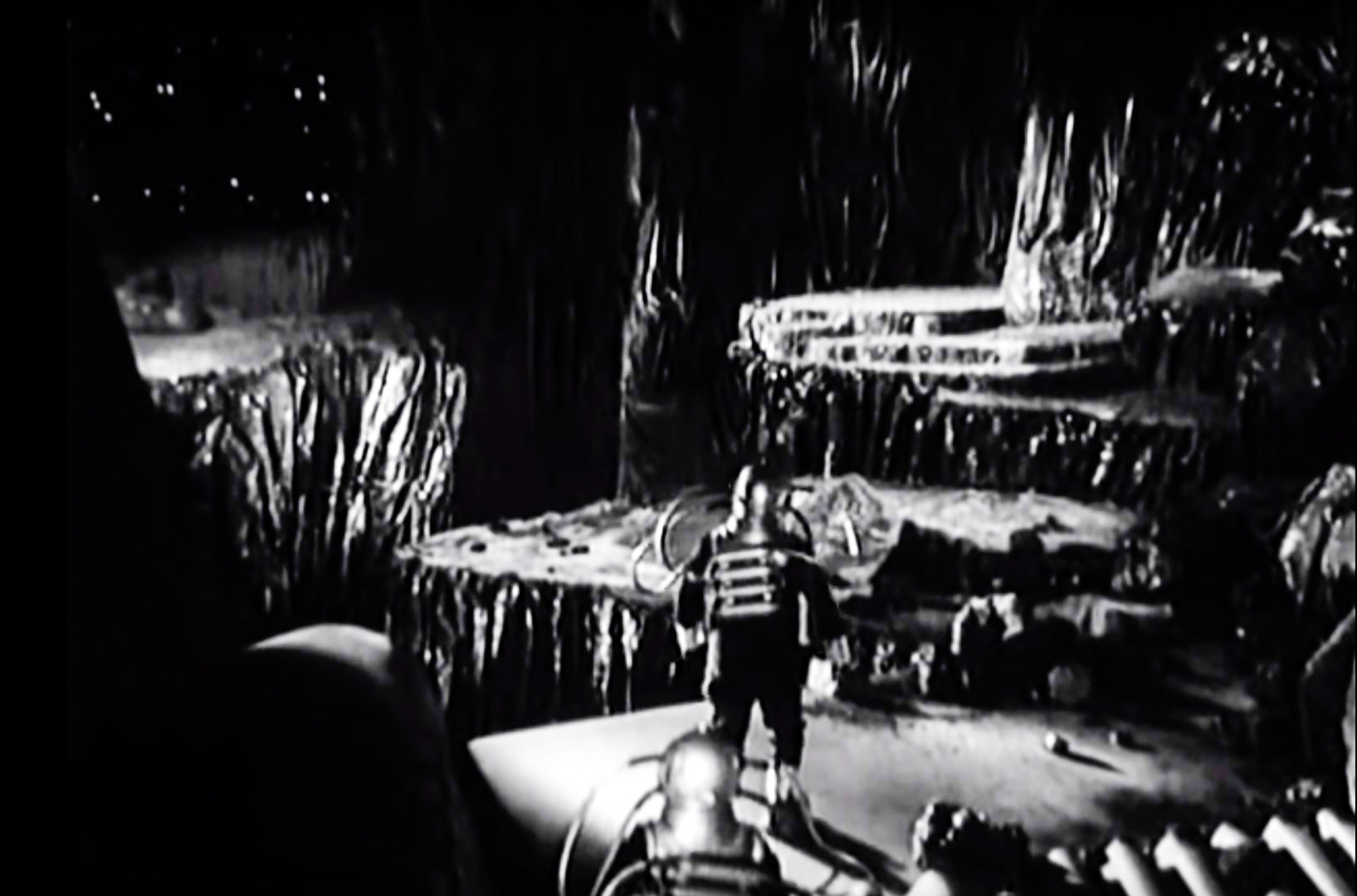
Cosmic Voyage.
Screenshot from filmIn the story, the protagonists lack oxygen, but they find “frozen remains of the lunar atmosphere” with which they solve the problem. A white cat, which was a passenger on a previous experimental flight, returns with them back home.
In 1950, the film, Destination Moon, came out in the U.S. This was the first color sci-fi film in the country. The main drama occurs during the attempt to return to Earth when the crew notices that the rocket is too heavy to take off.
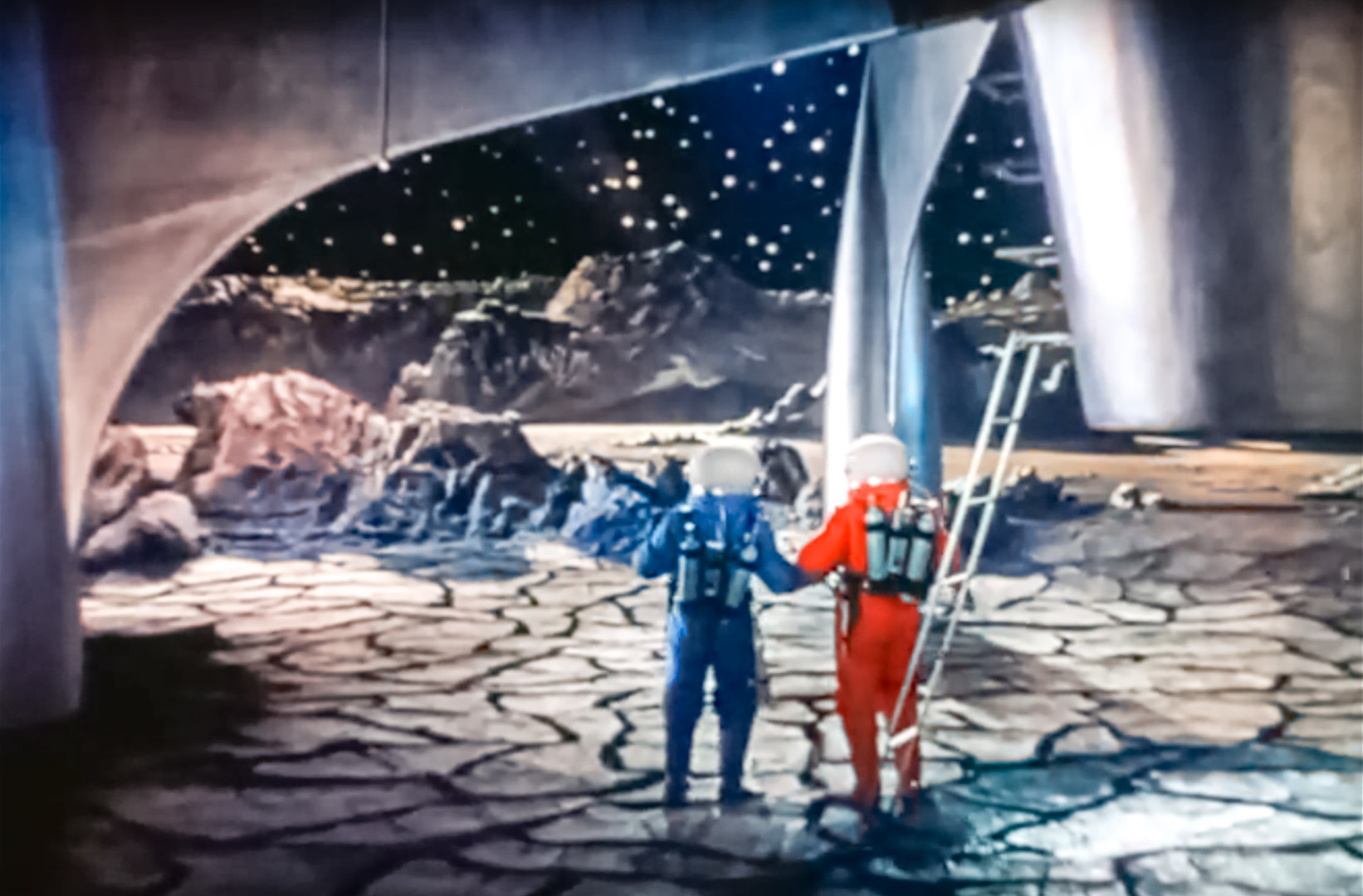
Destination Moon.
Screenshot from filmUnlike these films, which positively depicted space, First Men in the Moon (1964) is one of the first to depict human conflict with aliens, the Moon inhabitants, the Selenites.
Did it come true? Partially. The first humans landed on the Moon in 1969, and over the next three
The space race between the USSR and the U.S. was the main topic in science fiction films in the 1960s. Scripts often copied each other. Thus, in 1962 the USSR produced Planet Bur, which was
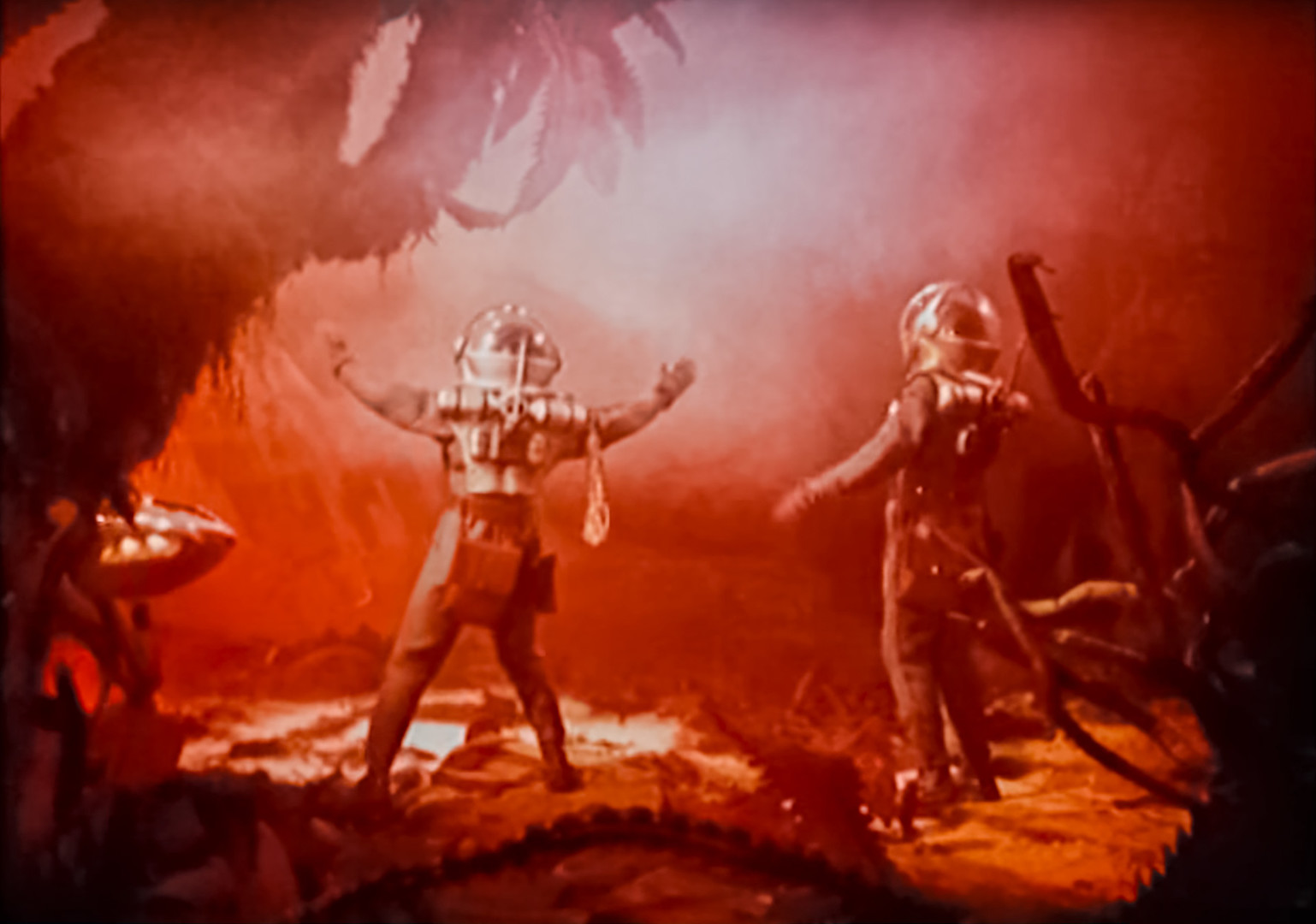
Planet Bur.
Screenshot from filmIn addition to Venus, sci-fi filmmakers “sent” Russians and Americans to Mars, Uranus and other unexplored galaxies. In the 1967 Soviet film, The Andromeda Nebula, which is about the distant future, a spaceship becomes trapped by a star’s gravitational field. Some interesting details can be seen on the spaceship, such as a pool with a springboard.
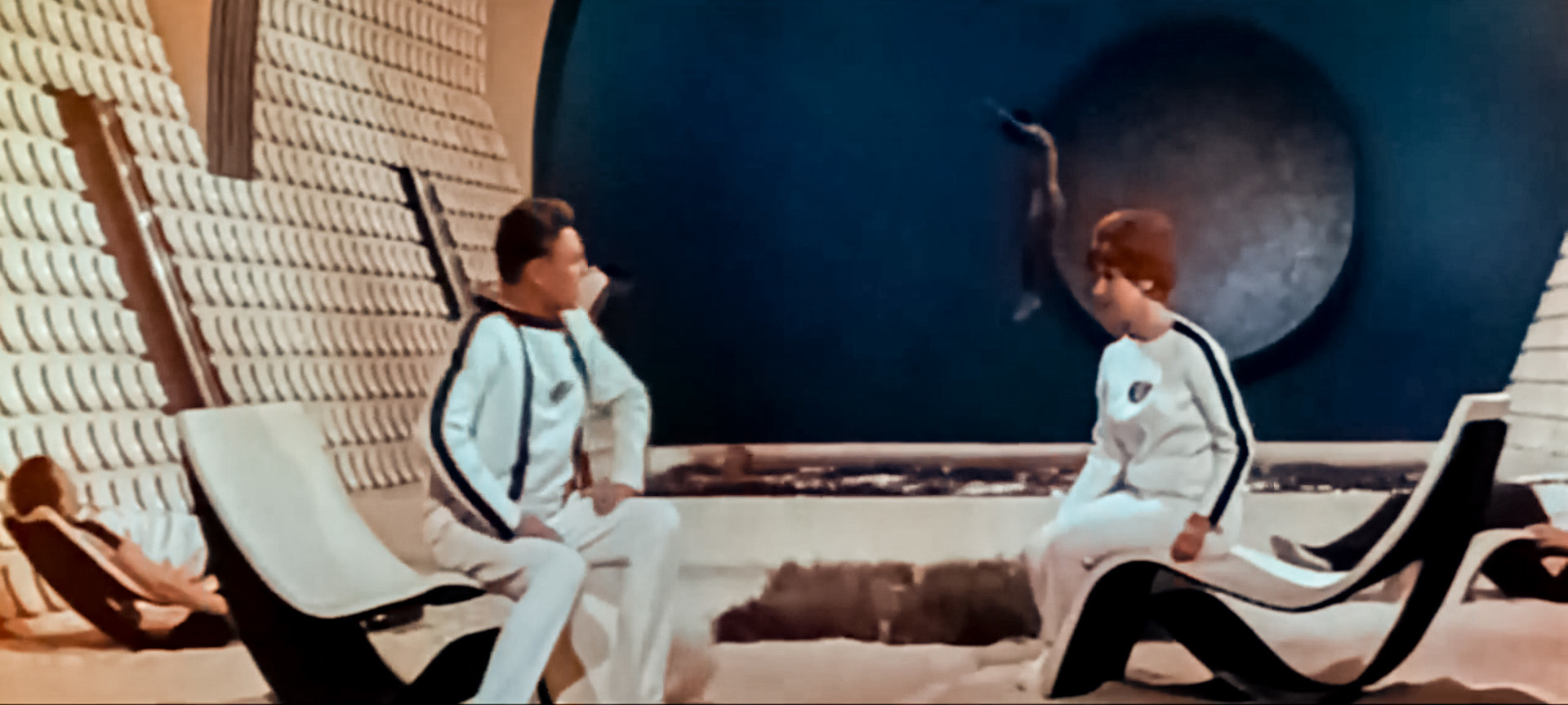
The Andromeda Nebula.
Screenshot from filmAndrei Tarkovsky’s film Solaris (1972), based on Stanislaw Lem’s novel, presents a horrible vision of the future. The action takes place on a half-deserted space station, which is studying the planet Solaris and its ocean, capable of materializing man’s most terrible recollections, and the expedition’s participants lose their minds. In 2002, Steven Soderbergh shot his version of the story, revisiting Tarkovsky’s film.

Solaris.
Screenshot from filmHas it come true? For now, no. Roscosmos,
People in the 23rd century will not be amazed by cloning. A person, however, who can read thoughts and move objects at a distance, will certainly raise some eyebrows. At least this is what happens in the Soviet two-part film, Per Aspera Ad Astra (1980), for which Kir Bulychov wrote the screenplay.
Niiya, a girl who is found in one of the battered spaceships, can read people’s minds and also move about in space and live without oxygen on other planets. She does not remember who she is and where she is from. She only remembers that she has a mission – to save Planet Dess.

Per Aspera Ad Astra.
Screenshot from filmIn Guest from the Future (1985) the protagonist is a teenage girl named Alisa Seleznyova from 2084. She reads people’s thoughts with the help of a special device, the
Has it come true? No. Cases of telekinesis and mind-reading are still more science fiction than reality.
The use of robotics and artificial intellect is a favorite topic today. However, not all robots were friendly towards mankind.
In the children’s two-part adventure film, Moscow-Cassiopeia/Teens in the Universe (1974), teenage cosmonauts find themselves on a planet inhabited by robots with artificial intellect. The robots realize that human emotions prevent the evolution of civilization and with the help of special procedures deprive all the people on the planet of their emotions. As a result, people stop reproducing and almost go extinct. Some survivors send signals to Earth, which are caught by Soviet schoolchildren.

Moscow-Cassiopeia/Teens in the Universe.
Screenshot from filmIn Guest from the Future (1985) Soviet schoolboy Kolya Gerasimov finds himself in 2084 and meets robot Werther, who is an administrator in the Institute of Time. Werther helps Kolya see the future, visit a cosmodrome and return to his era.
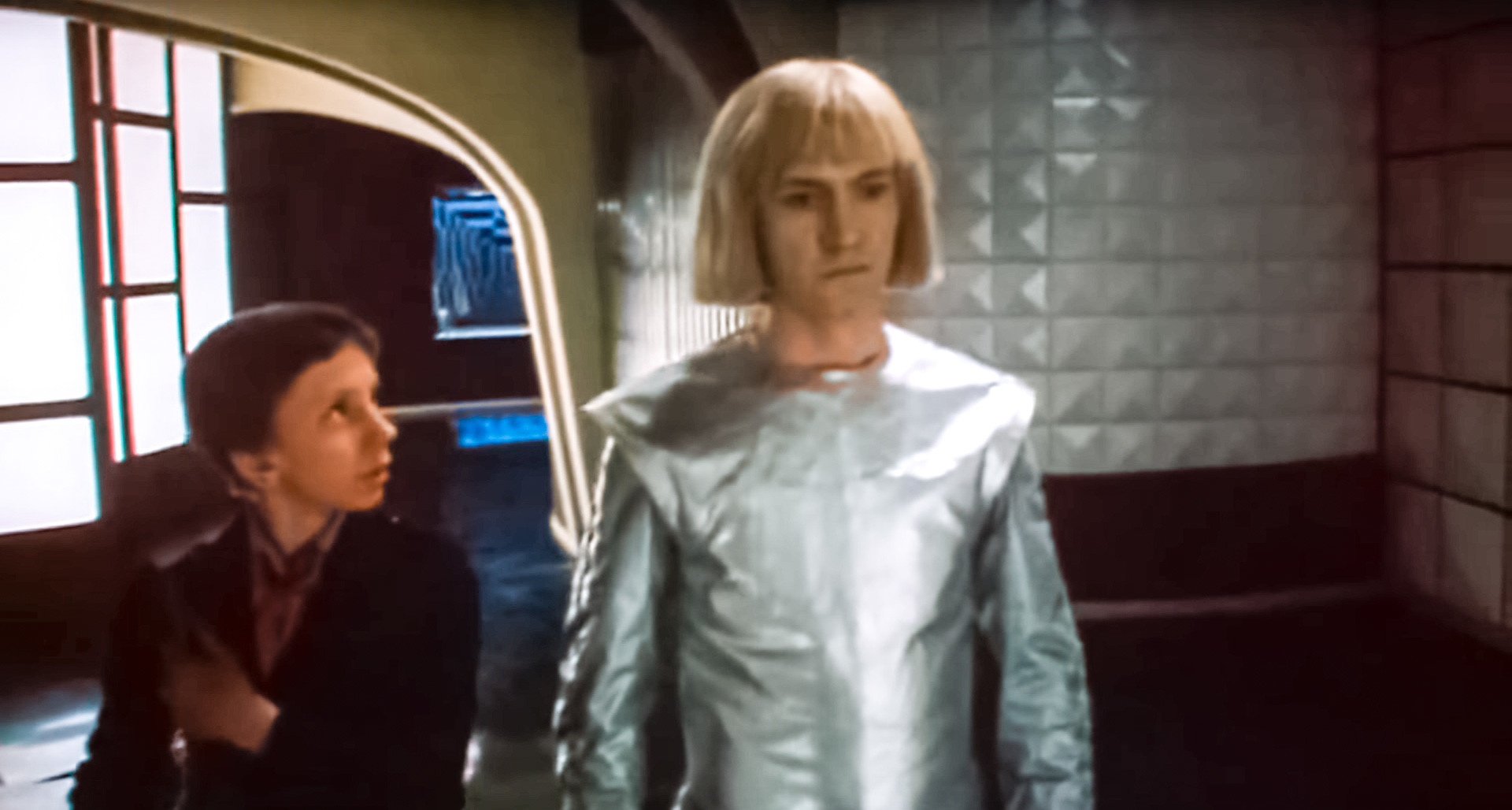
Guest from the Future.
Screenshot from filmMeanwhile, U.S. viewers watched Terminator (1984) about a different robot, a cyborg that came to 1984 from 2029. His mission is to kill Sara Connor, whose unborn child will win the war between man and machine. In the 1991
Has it come true? Partially. In March 2017, robot-androids in Moscow gave women flowers, read poetry and paid them compliments. Another Russian robot, REDOR (Final Experimental Demonstration Object Research), will fly to space in 2021. In Japan, robots already work as presenters in expositions. Many countries are developing combat robots.
Extensive use of video communication is predicted in practically all Soviet and American sci-fi films. Skype and Facetime prototypes were shown in The Andromeda Nebula (1967), I Was a Satellite of the Sun (1959), 2001: A Space Odyssey (1968), and many others.
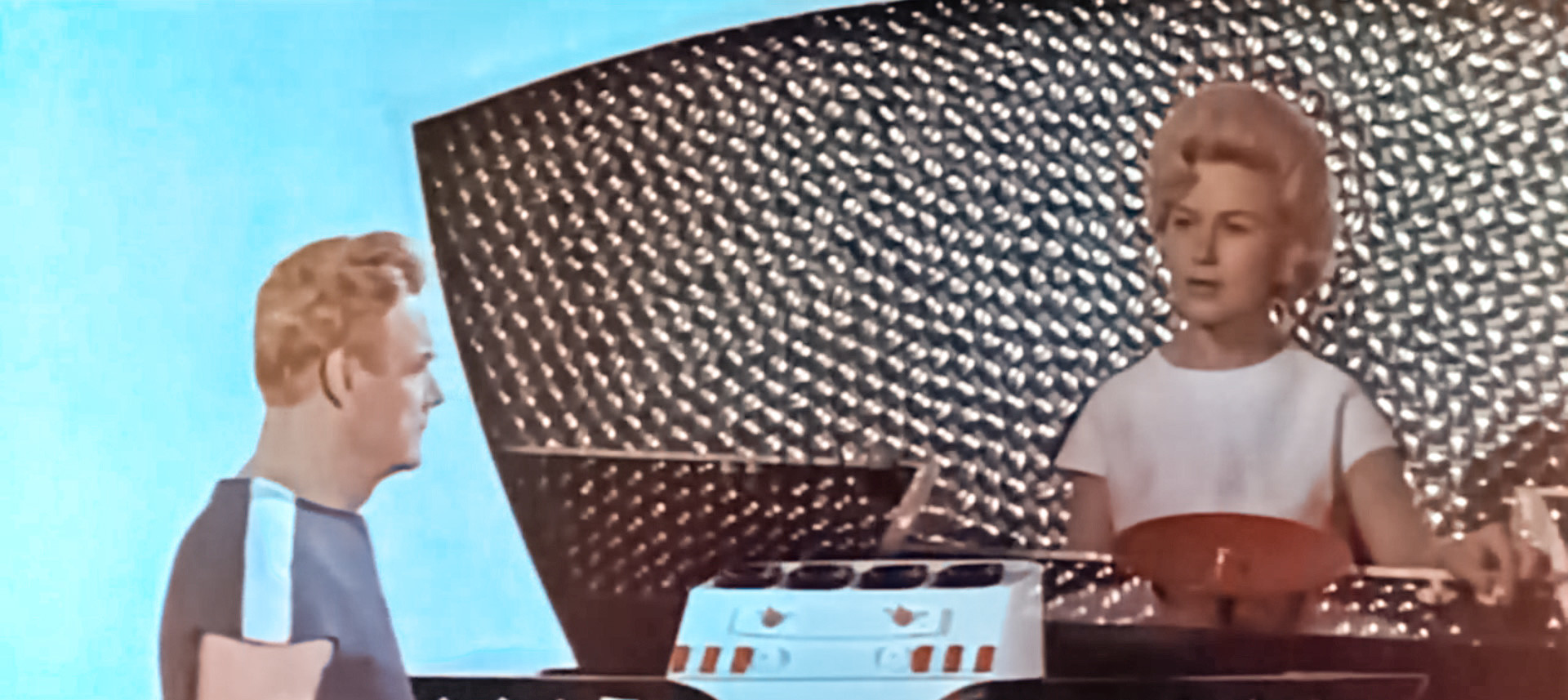
The Andromeda Nebula.
Screenshot from filmA Space Odyssey – videotex:
In the middle of the
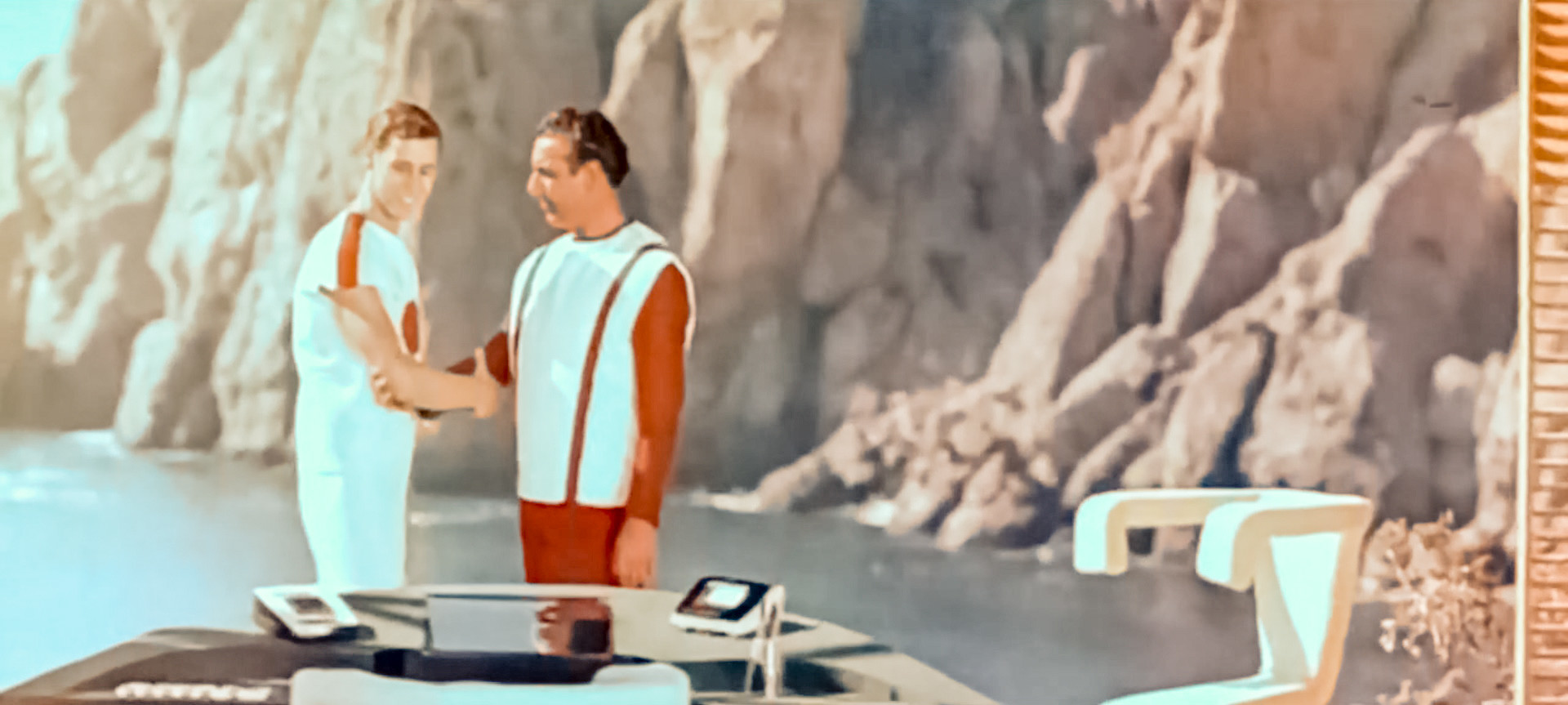
The Andromeda Nebula.
Screenshot from filmIn that film there is also a very interesting find – a flight audio diary that appears as a rotating microphone in the form of a ring.
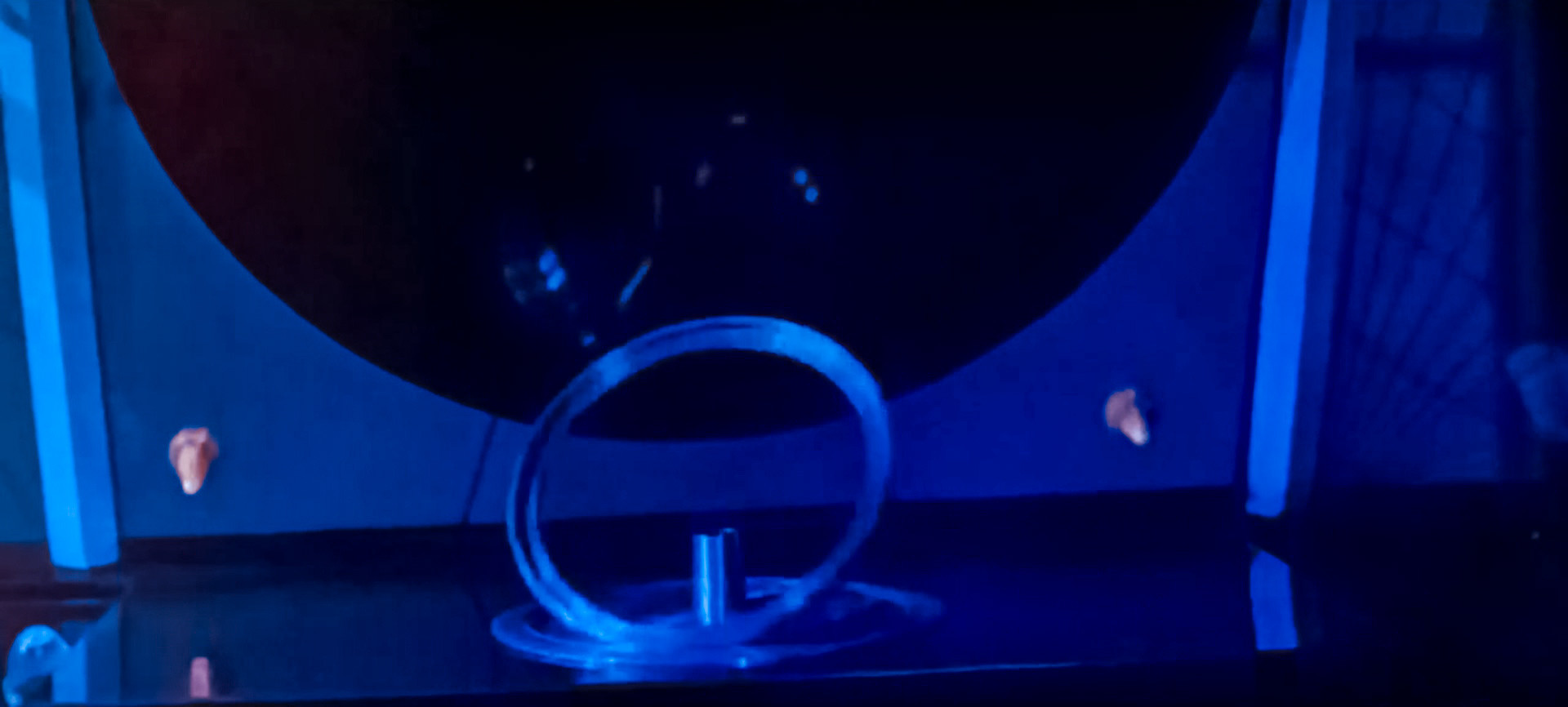
The Andromeda Nebula.
Screenshot from filmIn Per Aspera Ad Astra (1980) you can see another fascinating gadget: a smart watch for communication. Today, something like this will not surprise anyone. Not to mention in the 23rd century.
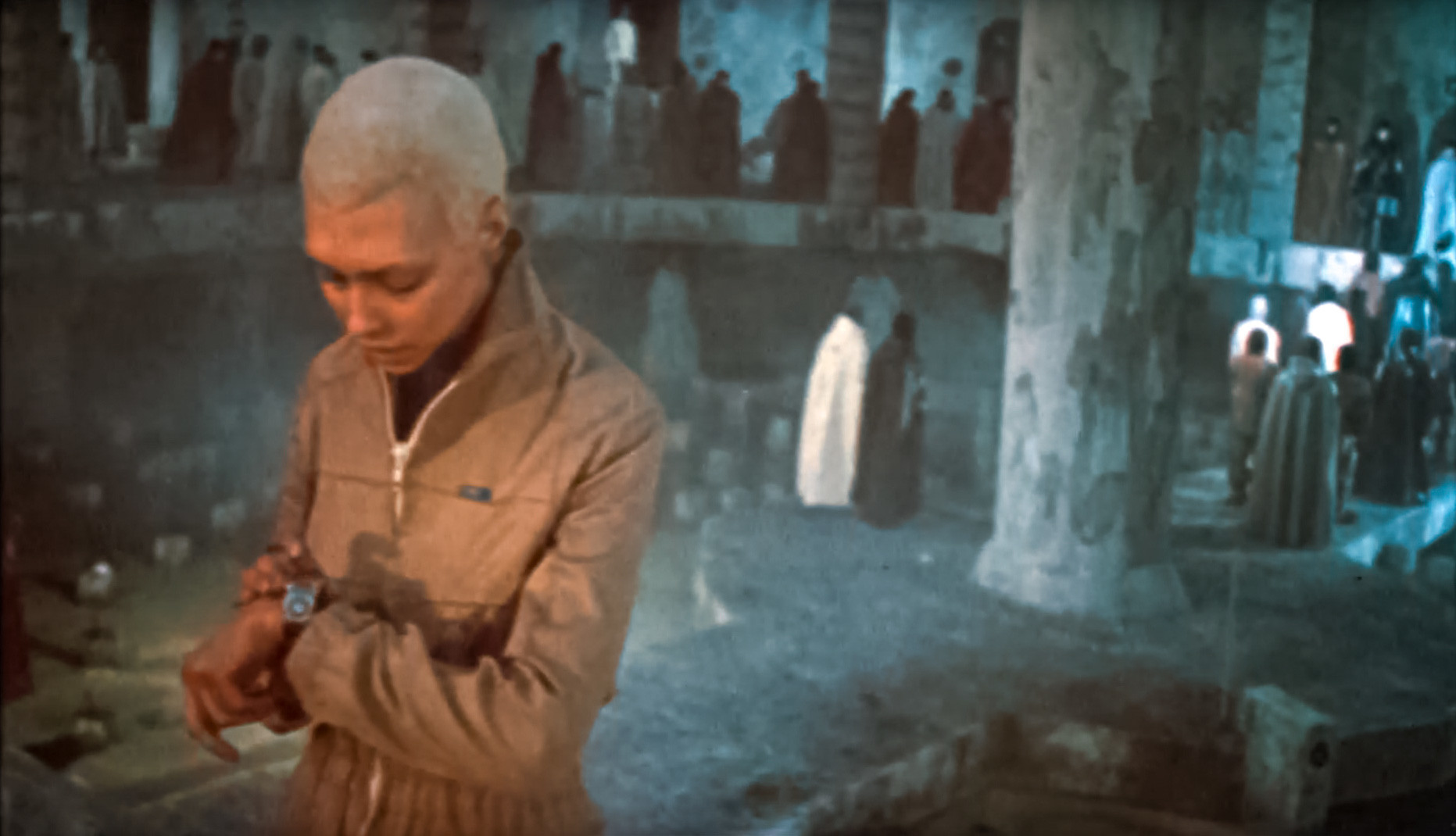
Per Aspera Ad Astra.
Screenshot from filmUnlike the USSR, the U.S. dreamt of personal television. The 1949 film, The House of Tomorrow, demonstrated a TV with three personal screens: for housewives, for
Has it come true? And how. Today everyone eats dinner looking at a smartphone. Soon, Google Glass will be integrated into smartphones.
Urban transportation
When making films about the future, screenwriters and directors carefully thought about the environment surrounding the protagonists. Thus, in the
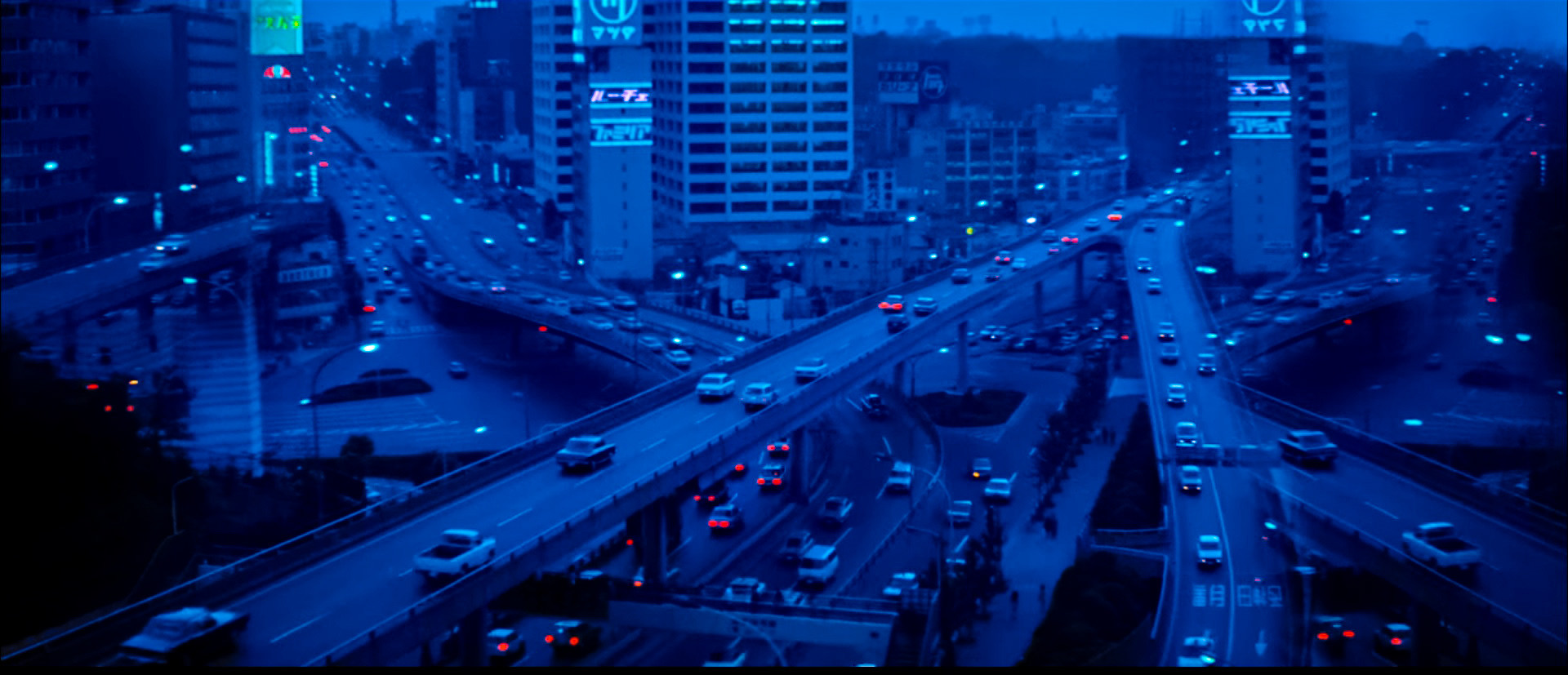
Solaris.
Screenshot from filmIn 1935, Soviet citizens saw a monorail in a film.
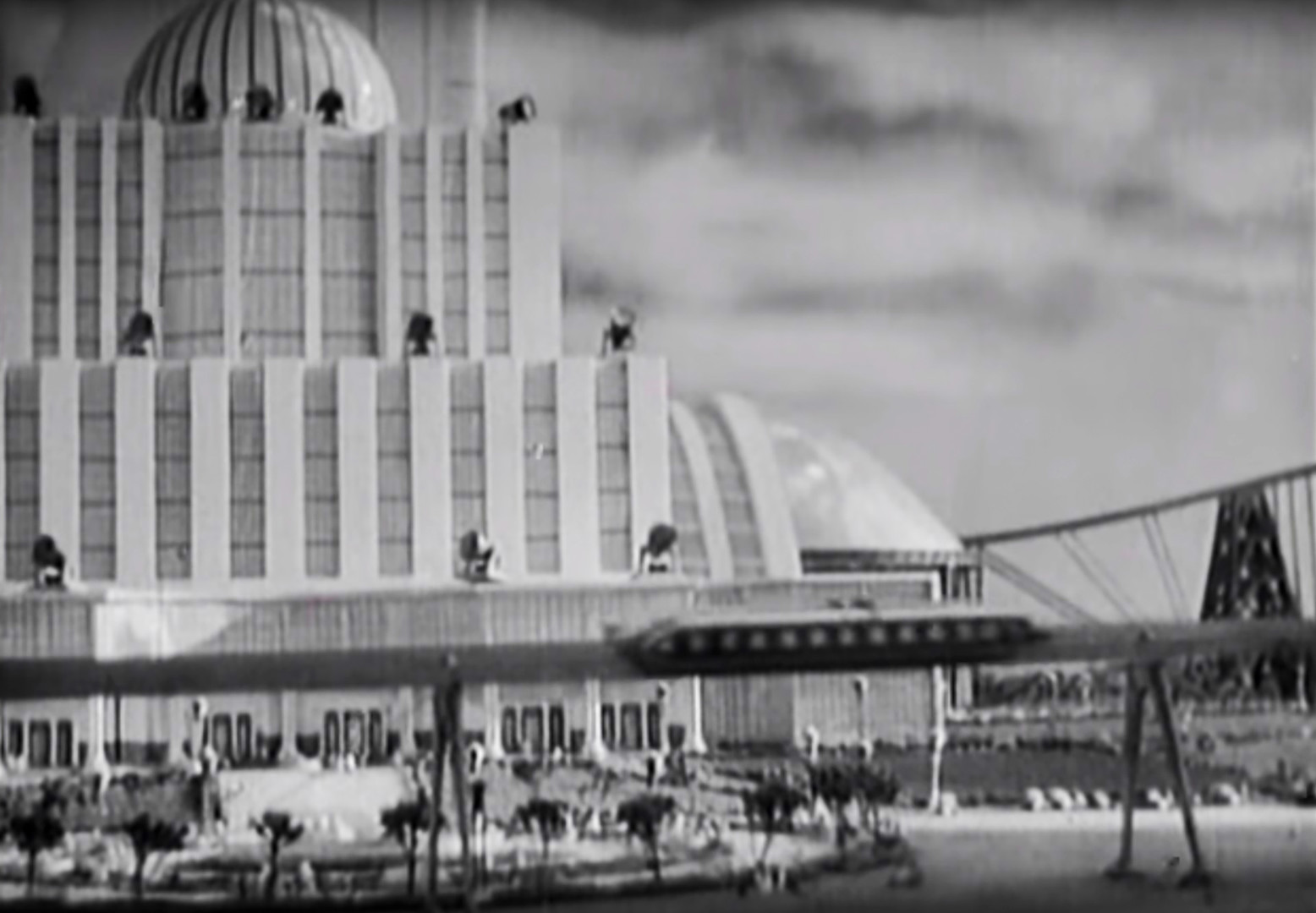
Cosmic Voyage.
Screenshot from filmThe Soviet film, Planet Bur (1962), shows a car with an anti-gravitational engine, and something like it can be seen in Star Wars, and Back to the Future 2 (1989).
American screenwriters thought that protagonists should have driverless cars. Remember how in Total Recall (1990) Arnold Schwarzenegger tries to explain to the robot taxi driver where to go?
Has it come true? Almost. Many cities have
Now we just have to wait and see when cars will start flying. Then, people can definitely forget about traffic jams. At least on Earth.
If using any of Russia Beyond's content, partly or in full, always provide an active hyperlink to the original material.
Subscribe
to our newsletter!
Get the week's best stories straight to your inbox